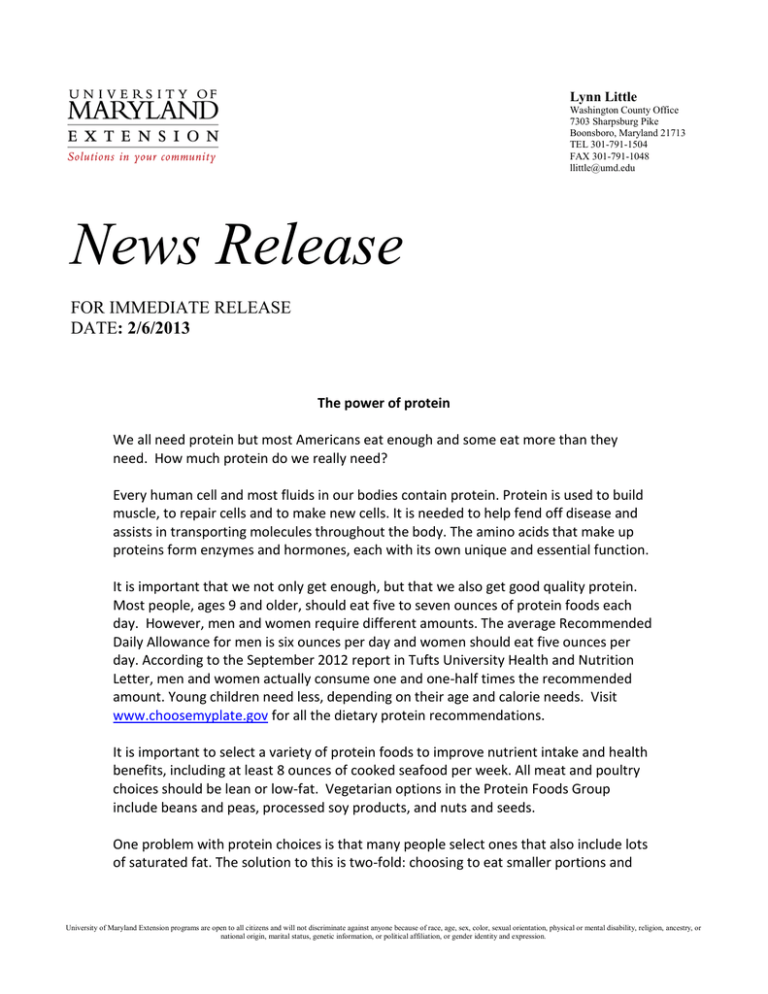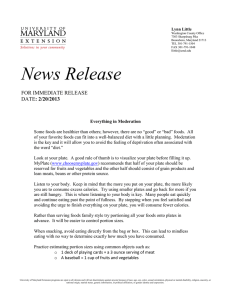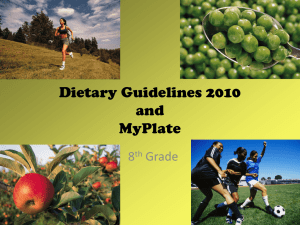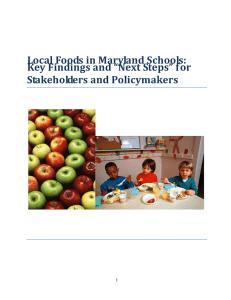Lynn Little
advertisement

Lynn Little Washington County Office 7303 Sharpsburg Pike Boonsboro, Maryland 21713 TEL 301-791-1504 FAX 301-791-1048 llittle@umd.edu News Release FOR IMMEDIATE RELEASE DATE: 2/6/2013 The power of protein We all need protein but most Americans eat enough and some eat more than they need. How much protein do we really need? Every human cell and most fluids in our bodies contain protein. Protein is used to build muscle, to repair cells and to make new cells. It is needed to help fend off disease and assists in transporting molecules throughout the body. The amino acids that make up proteins form enzymes and hormones, each with its own unique and essential function. It is important that we not only get enough, but that we also get good quality protein. Most people, ages 9 and older, should eat five to seven ounces of protein foods each day. However, men and women require different amounts. The average Recommended Daily Allowance for men is six ounces per day and women should eat five ounces per day. According to the September 2012 report in Tufts University Health and Nutrition Letter, men and women actually consume one and one-half times the recommended amount. Young children need less, depending on their age and calorie needs. Visit www.choosemyplate.gov for all the dietary protein recommendations. It is important to select a variety of protein foods to improve nutrient intake and health benefits, including at least 8 ounces of cooked seafood per week. All meat and poultry choices should be lean or low-fat. Vegetarian options in the Protein Foods Group include beans and peas, processed soy products, and nuts and seeds. One problem with protein choices is that many people select ones that also include lots of saturated fat. The solution to this is two-fold: choosing to eat smaller portions and University of Maryland Extension programs are open to all citizens and will not discriminate against anyone because of race, age, sex, color, sexual orientation, physical or mental disability, religion, ancestry, or national origin, marital status, genetic information, or political affiliation, or gender identity and expression. choosing options that are leaner meats, fish and poultry; low-fat dairy; and/or plantbased sources of protein. There are some people who are not getting enough protein. Older adults whose bodies no longer process the nutrient efficiently or who simply do not eat enough calories in a day, fall into this category. Studies have shown that this group needs to pay close attention to the quality and timing of their protein consumption. Protein can be eaten in portions throughout the day, rather than the typical large amount of protein at dinnertime. Adding an egg or some nuts at breakfast can make a substantial difference in meeting an older person’s protein needs. If a person follows a healthy eating plan it is not necessary to supplement with special protein-enhanced foods and drinks (that often cost more too). Visit www.choosemyplate.gov/food-groups/protein-foods-tips.html) for tips to Help You Make Wise Choices from the Protein Foods Group. University of Maryland Extension programs are open to all citizens and will not discriminate against anyone because of race, age, sex, color, sexual orientation, physical or mental disability, religion, ancestry, or national origin, marital status, genetic information, or political affiliation, or gender identity and expression.






